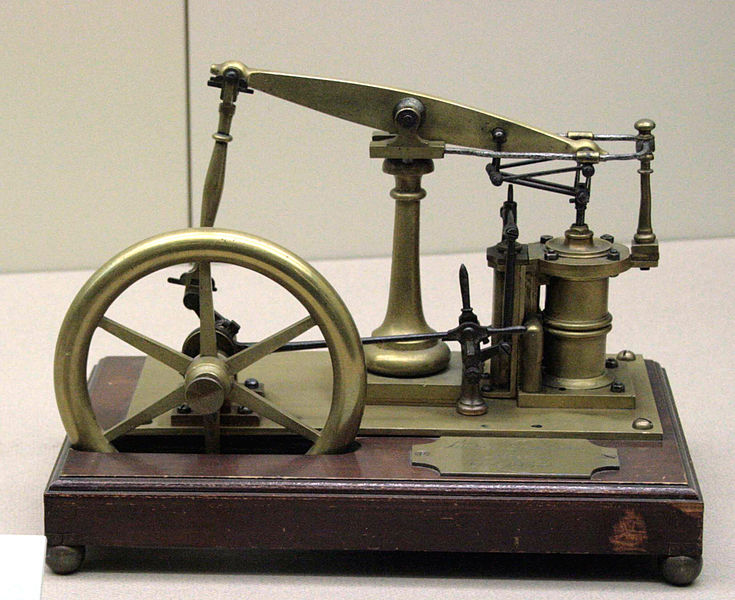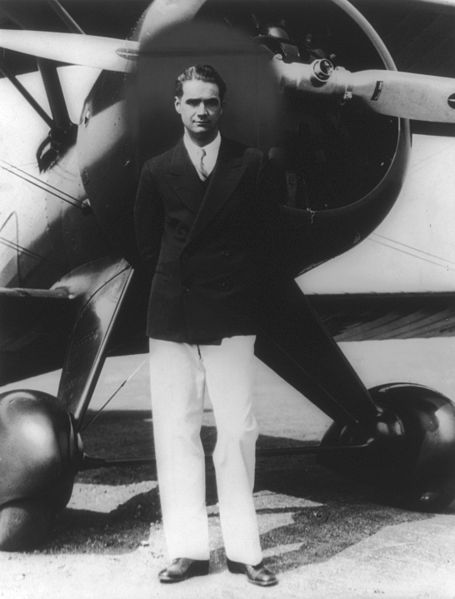In this comprehensive overview, we journey through pivotal moments in history that occurred on January 19th. Spanning from ancient empires’ political maneuvers to groundbreaking advancements in technology and science, this collection of events encapsulates the diverse tapestry of human achievement and struggle.
From the proclamation of Theodosius I as co-emperor of the Eastern Roman Empire, igniting shifts in religious and political landscapes, to the innovative introduction of the Apple Lisa, pioneering graphical user interfaces in computing, each moment reflects a step in the continuous march of civilization.
We also explore significant cultural milestones, like the birth of Edgar Allan Poe, and critical turning points in global conflicts, illustrating the indelible impact of individual genius and collective action on the world’s stage.
Through examining these events, we gain insights into the forces that have shaped our present and continue to influence our future.
January 19th Events in History
379 – Theodosius I is proclaimed co-emperor of the Eastern Roman Empire by Gratian
In 379, Theodosius I was proclaimed co-emperor of the Eastern Roman Empire by Gratian, the ruler of the Western Roman Empire.
This significant event marked the beginning of Theodosius’s reign, during which he would play a crucial role in promoting Christianity within the Roman Empire and in establishing a policy of religious tolerance.
Also Read: January 18 – On this Day in History
Theodosius was born in Hispania (present-day Spain) and was a military leader before his ascension to the throne. His reign is often noted for the Edict of Thessalonica in 380, which made Nicene Christianity the state church of the Roman Empire, and for his efforts to suppress paganism and heretical Christian practices.

1419 – Hundred Years’ War: Rouen surrenders to Henry V of England, completing his conquest of Normandy
During the Hundred Years’ War, the city of Rouen in Normandy surrendered to Henry V of England on January 19, 1419, after a siege that lasted several months. This event was a critical point in the war, allowing Henry V to solidify his control over Normandy and strengthening his position in his claim to the French throne.
Also Read: January 20th Events in History
The capture of Rouen significantly weakened the French Valois government’s hold on Normandy and paved the way for the Treaty of Troyes in 1420, which recognized Henry V as the heir to the French throne.
However, his untimely death in 1422 left his infant son, Henry VI, to inherit both the English and French crowns, complicating the ongoing conflict.
1520 – Sten Sture the Younger, the Regent of Sweden, is mortally wounded at the Battle of Bogesund
On January 19, 1520, Sten Sture the Younger, the Regent of Sweden, was mortally wounded at the Battle of Bogesund against Danish forces led by King Christian II.
Sture was a central figure in Sweden’s struggle for independence from the Kalmar Union, a series of personal unions that united the kingdoms of Denmark, Norway, and Sweden under a single monarch.
The battle and Sture’s subsequent death marked a turning point in the Swedish War of Liberation against Denmark. Despite his death, Sture’s legacy lived on, and his leadership contributed to the eventual dissolution of the Kalmar Union and the establishment of Sweden as an independent kingdom.
1607 – San Agustin Church in Manila is officially completed; it is the oldest church still standing in the Philippines
San Agustin Church, located in Manila, Philippines, was officially completed on January 19, 1607. It is recognized as the oldest stone church still standing in the Philippines. The church was designed in the Baroque style and has withstood numerous earthquakes and invasions, including the destruction of Manila during World War II.
San Agustin Church is a UNESCO World Heritage Site, notable for its architectural beauty, historical significance, and as a symbol of the enduring cultural heritage of the Philippines.
Its construction reflects the Spanish colonial influence in the Philippines, which began in the late 16th century and lasted for more than 300 years.

1736 – James Watt, Scottish inventor and mechanical engineer whose improvements to the steam engine were fundamental to the changes brought by the Industrial Revolution, is born
James Watt was born on January 19, 1736, in Greenock, Scotland. He was an inventor and mechanical engineer whose improvements to the steam engine were instrumental in advancing the Industrial Revolution.
Watt’s key innovation was the separate condenser for the steam engine, which greatly improved its efficiency and made steam power a viable energy source for a wide range of industrial applications. This invention not only revolutionized the use of steam power but also had a profound impact on the economic and social changes of the time.
Watt’s work laid the foundation for the development of modern mechanical engineering, and he is often celebrated for his contributions to science and industry.
1764 – John Wilkes is expelled from the British Parliament for seditious libel
On January 19, 1764, John Wilkes, a British journalist and politician known for his radical views, was expelled from Parliament for seditious libel due to his criticisms of King George III and the government in his newspaper, The North Briton, particularly in issue number 45. This expulsion was a landmark event in the fight for press freedom and parliamentary reform in Britain.
Wilkes became a symbol of resistance against governmental overreach and censorship, rallying public support for the principles of freedom of speech and the press.
His expulsion, trials, and subsequent re-elections to Parliament highlighted the tensions between the government’s desire to control dissent and the growing demand for civil liberties.
1788 – The second group of ships of the First Fleet arrives at Botany Bay
On January 19, 1788, the second group of ships from the First Fleet arrived at Botany Bay, marking the beginning of British colonization in Australia. The First Fleet, consisting of 11 ships, was sent by the British government to establish a penal colony in New South Wales.
This arrival is a pivotal moment in Australian history, representing the start of European settlement and the impact it would have on the indigenous Aboriginal communities and their land. Over the following years, the settlement would grow and expand, leading to significant cultural, social, and environmental changes in Australia.

1809 – Edgar Allan Poe, American writer, editor, and literary critic, is born
Edgar Allan Poe was born on January 19, 1809, in Boston, Massachusetts. He is considered one of the central figures of American Romanticism and is renowned for his tales and poems of mystery and the macabre.
Poe is best known for works such as “The Raven,” “The Tell-Tale Heart,” and “The Fall of the House of Usher.” His pioneering contributions to the genre of detective fiction, particularly with the character C. Auguste Dupin, and his profound impact on American and international literature, cannot be overstated.
Despite facing personal and financial difficulties throughout his life, Poe’s legacy as a master of horror, mystery, and the psychological thriller endures.
1829 – Johann Wolfgang von Goethe’s “Faust: The First Part of the Tragedy” receives its premiere performance
Johann Wolfgang von Goethe’s “Faust: The First Part of the Tragedy” received its premiere performance on January 19, 1829. This work is considered one of the greatest achievements of German literature and Goethe’s magnum opus.
“Faust” is a dramatic poem that explores the themes of ambition, the quest for knowledge, and the human condition, centered on the story of Dr. Faust, who makes a pact with the Devil, Mephistopheles, exchanging his soul for unlimited knowledge and worldly pleasures.
The play’s complex narrative, rich characterizations, and philosophical depth have made it a subject of extensive literary study and interpretation. Its premiere performance marked a significant moment in theatrical history, showcasing Goethe’s profound insights into humanity’s struggles and aspirations.
1839 – The British East India Company captures Aden
The British East India Company captured Aden on January 19, 1839, marking a strategic acquisition for British imperial interests in the Indian Ocean.
Aden, located in present-day Yemen, was prized for its location as a convenient refueling stop for ships traveling to and from India. The capture of Aden was part of the larger British strategy to secure trade routes and maintain its colonial dominance in the region.
It became an important coaling station for the Royal Navy and a crucial part of the British Empire’s communications and trade infrastructure in the 19th and early 20th centuries. The occupation of Aden illustrates the expansive reach of British colonial ambitions and its impact on global trade and politics during this period.
1840 – Captain Charles Wilkes circumnavigates Antarctica, claiming what became known as Wilkes Land for the United States
In 1840, Captain Charles Wilkes led a United States expedition that circumnavigated Antarctica, claiming what became known as Wilkes Land for the United States.
This expedition, officially known as the United States Exploring Expedition of 1838-1842, was significant for several reasons. It provided substantial proof that Antarctica was indeed a continent, contributed to the mapping and understanding of the Antarctic coastline, and collected an impressive array of scientific data and specimens in various fields.
Wilkes’ journey bolstered the scientific and exploratory reputation of the United States and played a key role in the era of Antarctic exploration. Despite facing harsh conditions and challenges, the expedition’s achievements marked a milestone in the history of exploration.
1861 – Georgia joins South Carolina, Florida, Mississippi, and Alabama in seceding from the United States
On January 19, 1861, Georgia declared its secession from the United States, joining South Carolina, Florida, Mississippi, and Alabama in forming the Confederate States of America. This move was a direct reaction to growing tensions over states’ rights and slavery, culminating in the American Civil War.
Georgia’s secession was significant due to its strategic position and economic power, particularly in cotton production, which was a cornerstone of the Southern economy. The state’s departure from the Union highlighted the deep divisions within the country and foreshadowed the brutal conflict that would ensue over the next four years.

1883 – The first electric lighting system employing overhead wires, built by Thomas Edison, begins service at Roselle, New Jersey
On January 19, 1883, Thomas Edison’s first electric lighting system employing overhead wires began service in Roselle, New Jersey.
This event marked a significant advancement in the use of electricity for public and residential lighting. Edison’s system utilized a central power station to distribute electrical power to lamps through a network of overhead wires, a pioneering concept at the time.
This innovation not only demonstrated the feasibility of electric lighting as a practical alternative to gas and oil lamps but also laid the foundation for the modern electric utility industry. The successful implementation in Roselle served as a model for future electric lighting systems across the world.
1915 – Georges Claude patents the neon discharge tube for use in advertising
French inventor Georges Claude patented the neon discharge tube on January 19, 1915. This invention paved the way for the development of neon lighting, which would become a ubiquitous form of advertising and signage in the 20th century.
Claude’s work on neon lights involved passing an electric current through gases, producing a bright glow. The first public display of a neon light was in December 1910 at the Paris Motor Show.
Neon lights became popular for their vivid colors and were used extensively for outdoor advertising, especially in cities like Las Vegas and Times Square, becoming symbolic of modernity and urban life.
1937 – Howard Hughes sets a new air record by flying from Los Angeles to New York City in 7 hours, 28 minutes, and 25 seconds
Howard Hughes, an American business magnate, pilot, film director, and philanthropist, set a new air record on January 19, 1937, by flying from Los Angeles to New York City in 7 hours, 28 minutes, and 25 seconds. Flying a Hughes H-1 Racer, a plane designed and built by his own company, Hughes shattered the previous transcontinental flight speed record.
This achievement was one of several aviation records held by Hughes, who was known for his contributions to aviation technology and his passion for flying. His flight demonstrated the potential for rapid cross-country travel and contributed to the development of faster, more efficient aircraft, influencing the future of commercial and military aviation.

1942 – World War II: Japanese forces invade Burma
On January 19, 1942, during World War II, Japanese forces began their invasion of Burma (now Myanmar), aiming to cut off the Burma Road, a critical supply line to China, and to expand their strategic perimeter. This invasion was part of Japan’s broader strategy to control Southeast Asia and the Pacific, disrupting Allied supply routes and establishing a defensive buffer zone.
The campaign in Burma was characterized by intense jungle warfare, with significant challenges posed by terrain, climate, and disease. The Japanese initially achieved rapid success, capturing Rangoon (Yangon) and forcing the British and Allied forces into retreat.
However, the Burma campaign would eventually become a protracted struggle, with significant contributions from Allied forces, including the British, American, and Chinese armies, as well as the Indian National Army. The Allied counteroffensive in 1944-1945 ultimately pushed Japanese forces out of Burma, marking a turning point in the Southeast Asian theater of WWII.
1966 – Indira Gandhi is elected Prime Minister of India; she becomes the first woman to hold the position
Indira Gandhi became the Prime Minister of India on January 19, 1966, after the death of Lal Bahadur Shastri. Her election marked her as the first, and to date, the only female Prime Minister of India.
Indira Gandhi, the daughter of Jawaharlal Nehru, India’s first Prime Minister, was a central figure in Indian politics for much of the 20th century. Her tenure as Prime Minister was noted for its political and social turbulence, including the Indo-Pakistan War of 1971, which led to the creation of Bangladesh, and the declaration of the Emergency in 1975.
Despite facing criticism for her authoritarian tendencies during the Emergency, Indira Gandhi was also credited with significant economic and social reforms in India. Her leadership profoundly shaped India’s political landscape, and her legacy remains influential in Indian politics.
1977 – President Gerald Ford pardons Iva Toguri D’Aquino (a.k.a. “Tokyo Rose”)
On January 19, 1977, President Gerald Ford granted a pardon to Iva Toguri D’Aquino, an American citizen who had been convicted of treason for her role as “Tokyo Rose” during World War II. D’Aquino was one of several English-speaking women who broadcast Japanese propaganda to Allied troops in the Pacific.
Her conviction in 1949 was based largely on the testimony of witnesses who later recanted their statements, leading to doubts about the fairness of her trial. The pardon followed a lengthy campaign by journalists and legal advocates who argued that D’Aquino had been unfairly convicted.
Ford’s decision to pardon her was seen as a corrective act of justice, acknowledging the complexities and the miscarriage of justice in her case. D’Aquino’s pardon was significant in the context of post-war reconciliation and the reassessment of wartime legal and moral judgments.
1983 – The Apple Lisa, the first commercial personal computer from Apple Inc. to have a graphical user interface and a computer mouse, is announced
The Apple Lisa, one of the first personal computers to offer a graphical user interface (GUI) and a mouse, was announced by Apple Inc. on January 19, 1983. Named after Steve Jobs’ daughter, Lisa was a groundbreaking product that aimed to make computing more accessible and intuitive to the general public through its use of icons, windows, and a pointing device instead of relying solely on text-based commands.
Despite its innovative features, the Lisa was a commercial failure, primarily due to its high price and limited software availability. However, the Lisa’s development played a crucial role in the evolution of personal computing, influencing the design of its more successful successor, the Apple Macintosh, and setting the standard for future user interfaces in the personal computing industry.
1993 – Czech Republic and Slovakia join the United Nations
On January 19, 1993, the Czech Republic and Slovakia were admitted to the United Nations as separate nations, following the peaceful dissolution of Czechoslovakia into two independent states on January 1, 1993.
This event, known as the “Velvet Divorce,” was marked by its peaceful nature and mutual agreement, in contrast to other instances of state separation. The split was precipitated by growing nationalist sentiment and political differences between the Czech and Slovak regions.
The smooth transition to independence for both countries and their quick admission to the United Nations underscored the international community’s support for their sovereignty and the peaceful approach to national self-determination.
This milestone in European history highlighted the changing political landscape in the post-Cold War era, as nations sought to redefine their identities and governance structures.
